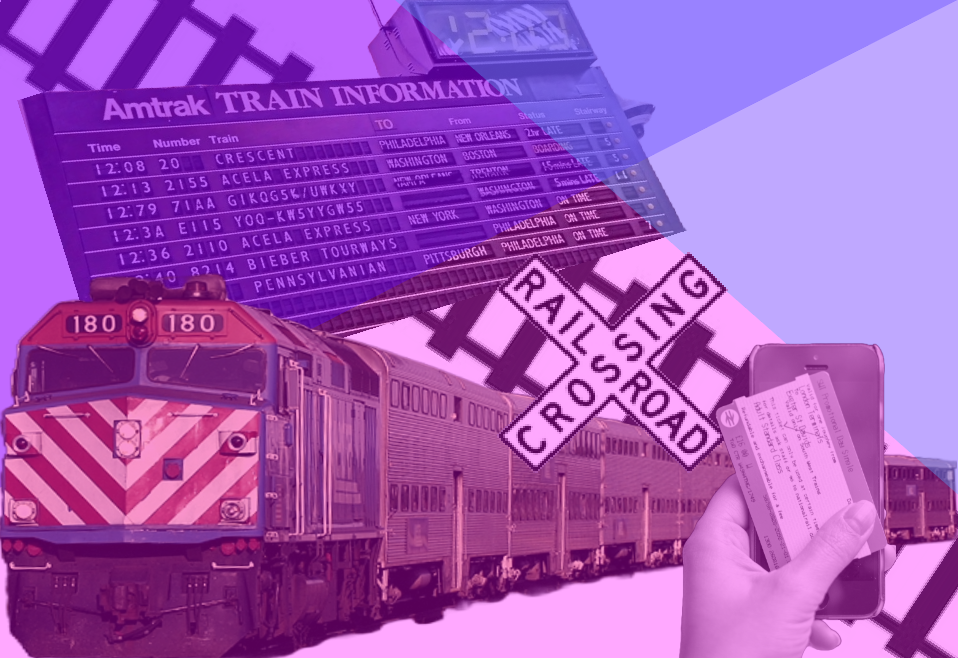Imagine a healthy, socially connected, pollution-free and safe society. Public transportation brings us closer to this reality. Passenger rail is an often overlooked form of public transportation. We must invest in it to meet our public transportation needs.
The 2021 federal infrastructure law allocated $66 billion nationally for railways. This presents us with a rare opportunity to improve passenger rail substantially. But Utah is not prepared to take advantage of these funds. The state government — specifically the Utah Department of Transportation — shows a lack of dedication and enthusiasm for passenger rail. This must change. State governments must take the lead in passenger rail.
Benefits of Passenger Rail
Passenger rail has numerous benefits. Passenger trains — having large carrying capacity — greatly decrease car dependency.
Mike Christensen, executive director of the Utah Rail Passengers Association, said people “don’t realize how much the auto-oriented way of thinking is costing us.”
On average, car owners spend $12 thousand annually on car-related expenses and an additional $14 thousand in taxes. This is an astonishing amount. Coupled with pollution, deaths and other costs, cars are bad news. We need alternatives.
Passenger trains aid those who cannot drive, avoid road traffic jams, benefit society economically, enhance living standards, create jobs and more.
According to Christensen, trains “serve so many different types of journeys,” able to carry riders across incredibly vast distances. However, they also enable riders to connect with numerous intermediate stops. Rather than riding the entire railway trip, riders can stop at countless communities. Passenger rail connects and strengthens us.
Some worry passenger rail lacks profitability or ridership for it to be worth the investment. While historical budget cuts made passenger rail less reliable and frequent, governments can and should prioritize railways. Incentivizing more people to ride should be our main priority.
Further, Christensen said expanding passenger rail has already caused “ridership [to] go up and up.” Investing in passenger rail will have real benefits for ridership. The state government has every reason to get working.
Leadership Troubles
While UDOT oversees transportation efforts across Utah, they show little dedication to railways. As Christensen said, Utah lacks the “institutional capacity to pursue [passenger rail] further.” We need a state entity that prioritizes passenger rail specifically.
UDOT is not meeting this need. Transportation departments across the country are spending transportation funds — received from the infrastructure law — on highways. Highway funding is occurring at a level that exceeds environmental advocates’ worst expectations. Many fear this will cause an additional 69 million metric tons of CO2 to fill the air by 2040.
Christensen said Utah is throwing “more money than ever at highways.” When UDOT prioritizes highways above public transportation and passenger rail, they fail society. We need good leadership, not opposition.
Christensen said it was “unclear” whether UDOT was interested in grant funding for a recent Salt Lake City to Las Vegas railway proposal. While they did eventually apply, the lack of enthusiasm was palpable. During application processes, other states fostered public excitement. Utah failed to publicly announce its applications until eight months after applying.
UDOT is largely unenthusiastic — even pessimistic — about passenger rail. Christensen added the agency’s lack of knowledge regarding intercity passenger rail is “mind-boggling.”
Current federal funding for rail and transportation is high. Christensen said Utah hasn’t “been in a place to … take advantage of [funding].” It is time to change that. There is no time to waste.
Bad News for Utah
Poor state leadership regarding passenger rail has already severely cost Utahns.
The 2021 infrastructure law allocates $1.2 trillion. While the law primarily funds highways, rail has also undeniably benefited. Rail received a 750% increase in funding, allowing $66 billion in funding for passenger and freight rail. Unfortunately, Utah missed out on many of these funds.
Under the infrastructure law, the federal government recently provided grant funding for passenger rail projects. In 2023, the states sent 90 grant requests. They agreed to fund 69 of them. While bordering states like Colorado and Arizona received funding for their projects, Utahns were left empty-handed.
Utah requested funding to build a passenger rail from SLC to Las Vegas. Idaho requested funding to re-establish passenger rail from Boise to SLC. Both railways would have better connected Utahns to major cities and served many communities. It is greatly disappointing that the federal government denied these funds.
“In comparison with other states, Utah is falling way behind,” Christensen said.
Unfortunately, while other states plan for a future with rail, Utah stays fixed on roads. Utah lacks good leadership regarding passenger rail, and so long as this continues, Utahns will surely miss out.
Onward
Subpar railways in Utah and the U.S. widely are frustrating for Americans. The U.S. has one of the world’s most disappointing rail passenger systems. Considering the benefits passenger rail offers, it is foolish for the U.S. to accept the sorry state of our passenger rail.
Given that this country already struggles with passenger rail, it is bad news to be one of the lowest ranking states within it. In terms of total rail miles, Utah ranks poorly against many others.
Christensen recommended individuals “reach out to [their] elected officials at all levels of government” and “voice [their] support for [rail].” This will push Utah and other states to improve.
Utahns and Utah legislators need to start leading the way in passenger rail. The success of railways — and subsequent community well-being — depends on it.




